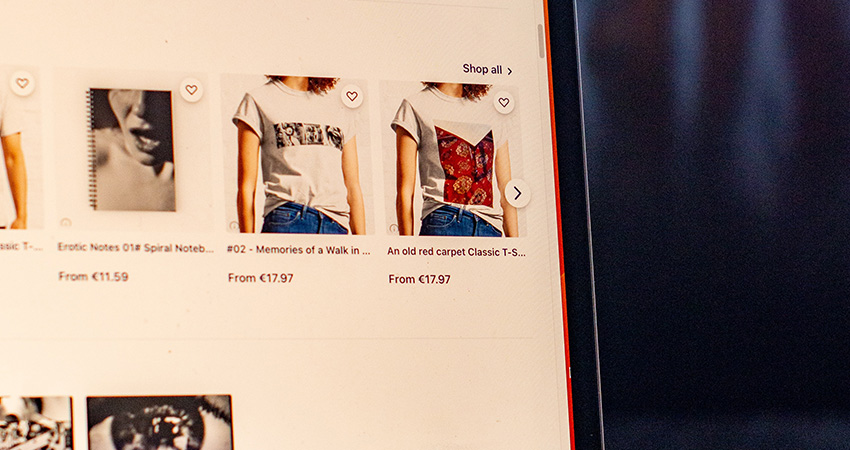The arrival of COVID-19 in early 2020 clearly had an enormous and unexpected impact on retail sales channels but the fundamental goal for merchants remained the same: Provide a great product and exceptional customer experience. So here we are, in the new ecommerce landscape, and there’s no going back.
A recent study from BigCommerce explored how early 2020 changed where merchants planned to make investments compared to the prior year. While improving the website experience took the top spot both years with 67% of retailers surveyed saying they will continue to invest in that area, investing in supply chain and logistics became a much higher priority as the rapid increase in online demand forced many merchants to address gaps in ecommerce operations that they may have been overlooking, or simply putting off, in pre-pandemic times.
Now that the scramble for survival has settled, merchants are again evaluating how best to allocate their investments for success in the new ecommerce landscape. There are three critical parts of a merchant’s value chain: capturing traffic, converting prospects, and optimizing the post-purchase experience. Here, we explore strategic investments retailers should consider this year to improve performance in those three critical areas and thrive in today’s digital environment.
Website Experience
For obvious reasons, website traffic skyrocketed for most retailers during COVID-19. It makes sense to keep cultivating online customer relationships by continuing to invest in providing the best possible website experience. Merchants should carefully evaluate their onsite presentations then invest in the right technology to ensure they are making quality first impressions.
Innovations in ecommerce technology have made it easier than ever to combine the worlds of content and commerce through beautifully designed sites that have robust ecommerce functionality. Merchants should consider which options and site features are important to customers and which content formats and interactions will immerse shoppers into the brand and help them discover products.
Optimizing and managing everything that has to do with the online experience, from product images and video to payment and shipping integrations, can be a source of anxiety for store owners but for most ecommerce platforms, there’s technology available to help retailers update, customize, change and add apps and platforms as needed.
Marketing and Advertising
While the initial reaction to COVID-19 for most retailers was to pull back or hit pause on their advertising efforts, it eventually became clear that doing the opposite could be lucrative since ad prices sharply decreased. Fifty-three percent of ecommerce executives surveyed say they will continue investing in marketing and advertising, and with good reason. Marketing plays a critical role in selling to consumers, and merchants should continue to lean into new channels and explore ways to meet their customers everywhere they want to shop.
Different marketing channels and strategies work differently for every category and brand. There are no one-size-fits-all secrets to growth through marketing and advertising, so merchants should incorporate experimentation to reveal the best path forward. There are cost effective options for testing and assessing advertising channels and tactics, then optimizing spend for the best performing options. A strong ecommerce platform will offer a variety of options for automating the design and execution of your marketing campaigns.
Logistics and Fulfillment
Typically considered the hidden, technical side of ecommerce, logistics and fulfillment revealed itself as an important extension of the customer experience when operations around the world were tested by an unforeseen surge in volume. Shoppers want delivery options, they want to know when their product will arrive and they don’t want to feel like they are on their own once they hand over their money. Merchants need to invest in making every part of the process seamless so that there’s no obstacle to building a valuable lifelong relationship.
Last year, many retailers learned the hard way the importance of contingency planning and flexible forecasting. Merchants should consider developing formal crisis plans and making changes that can offer a little more flexibility in fulfillment and variable distribution costs, such as 3PL vendors. Forecasting based on year-over-year metrics is difficult since consumer trends are shifting faster than ever before. Retailers need to update their forecasting methods to build a more flexible, responsive approach to inventory management and product sourcing.
It’s not often that widespread change happens overnight, but that’s how it felt for much of the world early last year. As businesses grappled with these changes, the strategic plans they brought with them into 2020 were tossed aside, requiring real-time investment decisions based on almost no visibility into what the future held. Even though we now have better clarity, merchants would be wise to retain some of the changes they made to adapt to a digital-first world and continue to invest in technology and resources to optimize the end-to-end online buying experience.
Meghan Stabler is vice president of global product marketing, communications and international expansion at BigCommerce

